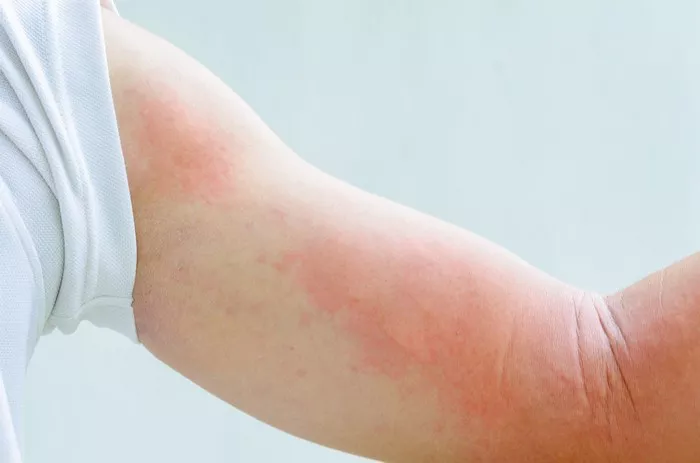Exercise-induced urticaria, a condition characterized by the development of hives, itchiness, and sometimes even life-threatening symptoms during or after physical activity, can be distressing for individuals who experience it. For those afflicted, questions about the persistence and potential resolution of this condition often arise. In this article, we delve into the intricacies of exercise-induced urticaria, exploring its causes, symptoms, treatment options, and the likelihood of it abating over time.
Understanding Exercise-Induced Urticaria
Exercise-induced urticaria is a form of physical urticaria, a condition in which physical stimuli trigger the release of histamine and other chemicals in the body, leading to the characteristic rash and associated symptoms. While the exact mechanisms underlying exercise-induced urticaria remain incompletely understood, it is believed to involve a combination of factors, including increased body temperature, friction from clothing, and the release of certain proteins during physical exertion.
The Experience of Exercise-Induced Urticaria
Individuals with exercise-induced urticaria may experience symptoms ranging from mild itching and redness to severe hives and even anaphylaxis in rare cases. The onset of symptoms typically occurs shortly after beginning exercise and may persist for varying durations. The intensity and frequency of symptoms can also vary widely among affected individuals, making it a highly individualized condition.
Seeking Treatment and Management Strategies
Managing exercise-induced urticaria often involves a multifaceted approach tailored to the individual’s specific needs and circumstances. While complete resolution of the condition may not always be achievable, various treatment options and lifestyle modifications can help alleviate symptoms and improve quality of life.
1. Medications:
Antihistamines are commonly prescribed to reduce the symptoms of exercise-induced urticaria by blocking the effects of histamine in the body. In some cases, other medications such as leukotriene receptor antagonists or oral corticosteroids may be recommended for more severe or persistent symptoms.
2. Preventive Measures:
Taking steps to minimize the likelihood of symptom occurrence can be beneficial for individuals with exercise-induced urticaria. This may include avoiding known triggers, such as certain foods or environmental factors, and adopting strategies to reduce friction and heat buildup during exercise.
3. Gradual Desensitization:
Some individuals may benefit from a gradual desensitization approach, wherein they gradually increase their tolerance to exercise over time. This can be achieved through a structured exercise program under the guidance of a healthcare professional.
4. Identification and Avoidance of Triggers:
Keeping a detailed diary of symptoms and potential triggers can help individuals identify patterns and make informed decisions about which activities to avoid or modify.
The Outlook for Exercise-Induced Urticaria
One of the most pressing questions for individuals with exercise-induced urticaria is whether the condition will eventually go away on its own. While there is no definitive answer that applies universally to all cases, there are several factors that can influence the likelihood of spontaneous resolution:
1. Underlying Causes:
Addressing any underlying factors contributing to exercise-induced urticaria, such as allergies or autoimmune conditions, may improve the chances of symptom resolution. In some cases, treating these underlying conditions effectively can lead to a reduction or elimination of exercise-induced symptoms.
2. Age and Hormonal Changes:
The severity and frequency of exercise-induced urticaria may fluctuate over time, with some individuals experiencing improvement or resolution as they age or undergo hormonal changes. Conversely, others may find that symptoms persist or worsen with time.
3. Lifestyle Modifications:
Making sustainable lifestyle changes, such as maintaining a healthy weight, managing stress levels, and avoiding known triggers, can play a significant role in managing exercise-induced urticaria and may contribute to long-term improvement or resolution.
4. Individual Response to Treatment:
The effectiveness of treatment interventions can vary widely among individuals, with some experiencing significant symptom relief while others may continue to struggle despite medical intervention. Exploring different treatment modalities and finding what works best for the individual is key to optimizing management and potentially achieving resolution.
Conclusion
Exercise-induced urticaria can present significant challenges for those affected, impacting their ability to engage in physical activity and negatively affecting their quality of life. While there is no one-size-fits-all solution, understanding the factors influencing the development and persistence of this condition can help individuals and healthcare providers develop tailored management strategies. By addressing underlying causes, implementing preventive measures, and exploring appropriate treatment options, individuals with exercise-induced urticaria can often achieve meaningful symptom relief and improve their overall well-being. While complete resolution may not always be attainable, many individuals find that with time and proper management, the impact of exercise-induced urticaria on their lives can be minimized.
























